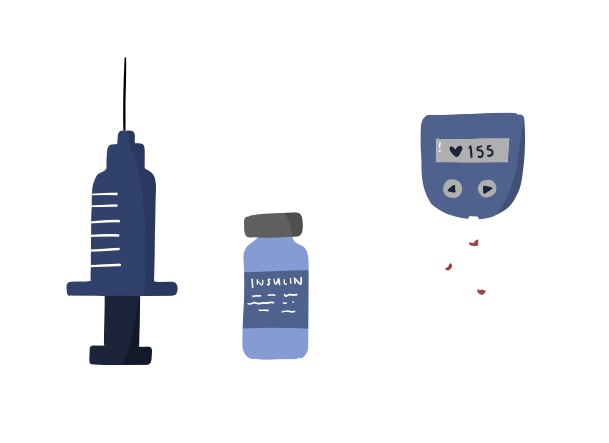November signifies national diabetes awareness month
November 29, 2022
Diabetes is a prominent health condition occurring throughout the world that affects how bodies turn food into energy. With type one diabetes, the body doesn’t make enough insulin or can’t use it as well as it should. When there isn’t enough insulin or if cells stop responding to insulin, too much blood sugar stays in the bloodstream.
Type two diabetes is caused by the pancreas being overworked. With a poor diet, the body’s insulin cannot keep up with excess sugar and carbohydrates. Type two diabetes is developed over time, with one in five adolescents having prediabetes according to the CDC. “Keeping a healthy diet and trying your best to exercise is a way teens can prevent developing prediabetes,” school nurse Ms. Jean Gambo said.
But what have schools done to help? Montgomery County has implemented a program to train teachers in case of a diabetic emergency. Teachers possess the knowledge of what steps to take if a student’s blood sugar is too high or too low.
“We get the list of students who are diabetic, and specific signs to look for if a student is acting differently,” history teacher Ms. Kerri Fry said.
Additionally, teachers learn what to do in the case of an emergency.
“If they have insulin we know what to do and what steps to take,” Ms. Fry said.
Classes can be more challenging for students with diabetes.
“One way my type one diabetes impacts my everyday life is my mood. High blood sugar means I’ll likely have a headache and be irritable. Low blood sugar means I’ll feel shaky and weak,” an anonymous student diagnosed with type one diabetes said.
“I recommend that the school gives students with diabetes the right to go to the bathroom whenever we need privacy to take insulin or eat to raise our numbers,” the student said. Just a small tweak like this could improve these students’ learning conditions.
Sadly, there is no cure for diabetes yet. But certain actions such as losing weight, eating healthy food, taking prescribed medicine and being active can help, according to the CDC.
Short-term fixes include eating a small snack to raise blood sugar if needed.
“I’ll eat a kids-size pack of skittles to raise my glucose levels,” the diabetic student said.



